#Buddha enlightenment
Text
Happy Vesak!
Today is Vesak, let’s celebrate it!!
Today we Buddhist celebrate Buddha’s birth, enlightenment, and mahaparinirvana on what is the most sacred day to millions of Buddhists around the world.
Image taken on Internet
On this day, the Day of the Full Moon in the month of May, two and a half millennia ago, in the year 623 B.C., Buddha was born. It was also on this that He attained enlightenment,…

View On WordPress
#Buddha#Buddha enlightenment#Buddha&039;s Birth#Buddha&039;s death Parinirvana#Buddha&039;s enlightenment#Buddha&039;s parinirvana#Buddhism#enlightenment#mahaparinirvana#Raffaello Palandri#Raffaello Palandri Buddhist Master#Vesak
21 notes
·
View notes
Text

Nam June Paik: Enlightenment (1990)
1K notes
·
View notes
Text

tsukumo yuki joins the fight!
[id: It’s a redraw of the panel where Tsukumo joins the fight between Choso and Kenjaku, her shikigami hovering in the air behind her while the barrier has broken. She’s drawn with tan skin and long blond hair with her brown roots visible. Her outfit has been modified slightly so that she wears a black body suit and green baggy pants, and she’s depicted as more muscular than she is in the manga. On her left arm, she has a tattoo sleeve filled with flowers and a fish, and her earlobes are also stretched though she doesn’t wear any earrings. /end id]
#ok so there’s actually a long thought process behind her earlobes#cuz originally I was gonna give her a bunch of piercings but then I thought about it more#and had an idea about her and Geto#I don’t wanna ramble in the tags but it boils down to Buddha and someone who falsely believes they’ve achieved enlightenment#vs someone who’s actually found their purpose#jjk 204#jjk spoilers#jujutsu kaisen#jjk#nibeul art#tsukumo yuki
2K notes
·
View notes
Text
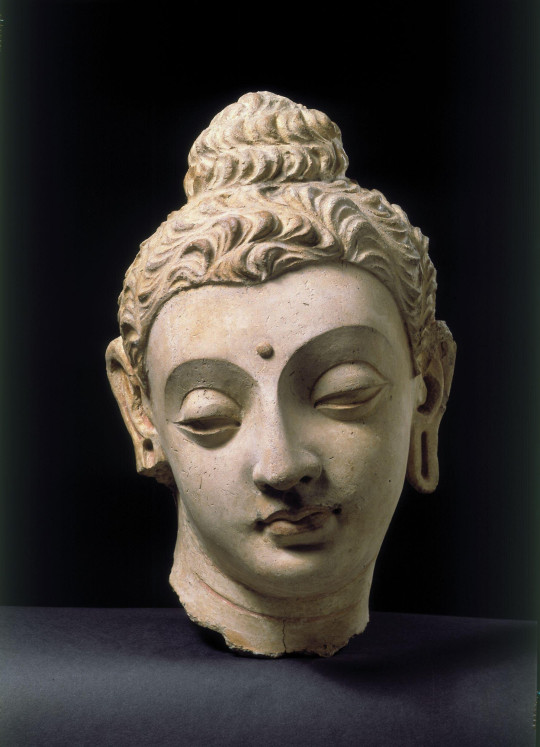
[Image above: Head of the Buddha, 4th CE-5th CE, V&A]
Buddha to his disciples, mini-series (22)
Bodhi (disambiguation) - Enlightenment and the perfection of the Buddha's Way
The 8th of December is the day, the Buddha attained enlightenment, and is celebrated every year in Buddhist communities as 'Bodhi Day'. Bodhi means enlightenment and the perfection of the Buddha's Way.
At the age of 35, Gautama Buddha (Ref) attained enlightenment under the Bodhi tree (Ref2) in Bodh Gaya and became a Buddha (the awakened one).
The nature of that realisation is “the truth of the universe”. When we speak of truth, most of the time it tends to be only the truth of a certain time and a certain region. We must not forget that, in addition to such truths, there are truths that transcend time and space, that is, the truth of the universe.
This concludes the 'Buddha to his disciples, a mini-series' for now. Thank you very much. From the next issue, we will focus on 'Legendary creatures and humanoids on anthropomorphism'.

ブッダから弟子たちへ、ミニシリーズ (22)
成道 〜 悟りを開き、仏道を完成すること
12月8日は釈迦が悟りを開いた日として仏教徒の地域では、毎年「成道会」が行われている。「成道」とは悟りを開き、仏道を完成することである。釈迦釈迦(参照)は35歳のとき、ブッダガヤーの菩提樹(参照2)の下で悟りを開いてブッダ(目覚めた人)となった。
その悟りの内容は「宇宙の真理」だ。真理というと、たいていの場合、ある時間、ある地域の真理にすぎない。そのような真理に加えて、時間と空間を超越した真理、すなわち宇宙の真理があることを忘れてはならない。
「ブッダから弟子たちへ、ミニシリーズ」は今回で終了致します。ありがとうございました。次回からは擬人化された伝説の生物とヒューマノイド」を特集する予定ですので、お楽しみに。
#buddhism#buddha#bodhi day#bodhi#bodhi tree#bodh gaya#enlightenment#truth of the universe#universal truths#nature#art#philosophy#wisdom
136 notes
·
View notes
Text
Life is a dream.
God is the dreamer.
God is dreaming about us, what it is like to be us and what we do.
Our ego/personality is just a character god is dreaming.
When our lives end, our true self, God, merely wakes up and returns to being Himself.
So we never really die, we Iive on with, through and in God.
#meditation#buddha#philosophy#spirituality#enlightenment#mindfulmeditation#mantra#advaita#illumination#mysticism#jesus christ#catholic#gnostic#gnostic christianity#nonduality#nondualism#gospel#christianity#unitarian#universalism#jesus#life after death#kingdom of heaven#god#yahweh
33 notes
·
View notes
Text
Learn to connect without desiring to possess and you will know true Love.
- a calm peaceful mind
#mindful awareness#taoism#zen#enlightenment#meditation#mindfulness#awareness#wisdom#zen mind#conscious awareness#awakening#awakened#spiritual awakening#buddism#buddha#buddhism#self care#consciousness#enlightened#inner peace#perception#spiritual journey#spirituality#spiritual#understanding
211 notes
·
View notes
Text
How old were you when you realised that Vishnu's Dashavataras represent the evolution of mankind
#matsya = fish#kurma = sea dwellers#varaha = the first vertebrates#narsimha = half man half animal#parshurama = man with axe/weapon#vamana = man developing higher intellect#rama = the perfect man#krishna = man developing consciousness about dharma and adharma#buddha = man ascending to enlightenment#kalki = the end of adharmi mankind#i havent slept in 4 days#hinduism#hindu memes#hindu epics#hindu mythology memes#hindu mythology#hindublr#hindusim#vaishnavism#vishnu
22 notes
·
View notes
Text
The Four Noble Truths - What the Buddha really wanted to tell you and what he really wanted to say.

Suffering: when you are alive, you can have fun, you can have good things, but life is suffering because we all die eventually, thus "it is suffering"? Is that really all there is to it? We tend to think of suffering and enlightenment separately, thinking that you have to be enlightened because you have a problem. Buddhism teaches that you should not separate worries and enlightenment, as they are the same thing. Suffering is "not being able to do what you want", but 'trying to do what you want when you don't get what you want' is suffering.
Set: is desire the cause of suffering? Plant seeds are the direct cause of sprouting, but they germinate due to the appropriate combination of soil, weather and various other environmental factors. The 'cause' of 'causation' refers to the direct cause, while 'fate' refers to the indirect cause. As the word implies, the cause of an event, such as a quarrel between a husband and wife, is a collection of various things. “I don't know what the cause is. What we don't know, we don't have to know".
Cessation: Will it work if we eliminate desire?
Suppose a flower falls when the wind blows. If the wind does not blow, will the flower not fall? If the wind stops blowing, will the flower return? No, it will not. It is impossible to destroy the cause. To let the flowing water flow, to adjust it, to adjust it little by little, that is cessation. It means to reduce desire "just a little".
The Path - is the ideal ‘The Four Noble Truths’? The kanji character for 'Right' is very troubling. If you look at the construction of the character for 'right (正)', in the Kouki script, you see a walled city about to be conquered by an army. So, being right is not as good as you think it is. So it is better not to be obsessed with what is right. It's okay to have troubles.
The Buddha's statement ' the Four Noble Truths (The path of suffering, set and cessation).' tells you how you should live your life. It is a great path. The Buddha is like a star in the sky. You should walk towards the star. You will never reach the star. You will never attain enlightenment. You will know that you don't know what you don't know, and that is 'enlightenment'.
Therefore, I hope that you and I will all live our lives in a relaxed, leisurely and moderate way.
[Please note that this content is based on a commemorative performance by Hiro Sachiya on 28 October 2019. ― Hiro Sachiya (27 July 1936 – 7 April 2022) is a Japanese religious analyst.]
#zen#mindfulness#buddhism#wisdom#philosophy#nature#art#zen teachings#four noble truths#buddha#enlightenment#enjoy life
113 notes
·
View notes
Text
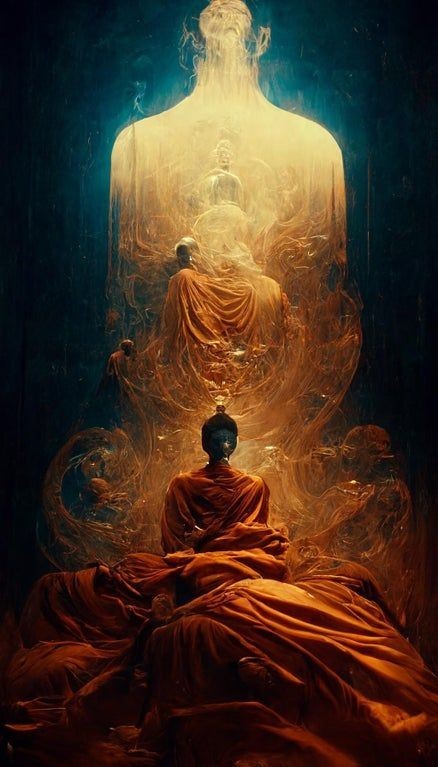
Wesak . 🙏🙏🙏
94 notes
·
View notes
Text
How to Meditate

Assume a comfortable position with your body.
The most recommended posture for meditation is seated cross-legged. This is because it balances support for the body and wakefulness for the mind. However, you can lie down, be seated in a chair, or adopt another similar posture. The main emphasis for meditation posture is that it allows you to focus your attention on the meditation without getting distracted by the body.
Close your eyes and breathe naturally.
Focus your attention on the space directly ahead of you and slightly upwards as the spot between your eyebrows.
In sanskrit, the word for meditation is ‘dhyana’ and it essentially means ‘to pay attention to.’ There are many meditation techniques around but what they all depend on is the application of attention. Here, you want to be gentle with your attention. Do not strain your eyes but be relaxed and attentive. If looking between your eyebrows is a strain, try aiming toward the tip of your nose instead.
Do not deliberately imagine or think about anything. Remain composed, relaxed, and attentive to the space between your eyebrows.
The purpose of meditation is silence and stillness. However, there is a difference between actively thinking and “having” thoughts. Here the instruction is to refrain from actively thinking. This does not mean thoughts should be suppressed from arising.
In meditation, your attention can be focused and relaxed and without thought. Then a thought might arise out of nowhere. This doesn’t mean something bad or wrong happened. You do not need to push the thought away in order to “preserve” or “get to” inner silence. If you do not follow the thought by thinking about it, then it will leave the way it came. If you do follow the thought and find yourself engaged in a train of thoughts, gently bring your attention back to the spot between your eyes and refocus with a calm breath.
In this way, you free your mind from the compulsion to chew needlessly on phenomena appearing in your consciousness.
Set a timer. Do not get up until the timer sounds.
Along with thoughts, many feelings may get churned up during meditation. Some of those feelings may be angry, anxious, energetic, or restless. Do not allow them to control you. If you simply remain seated and attentive with eyes closed, you will be victorious over any thought or feeling that arises. It takes more doing to quit a meditation than to see it through to its end.
Common Issues
My thoughts just don’t stop. They can even get more out of control. What am I doing wrong?
For your whole life, and perhaps others before it, your mind has acquired many habits and imprints. When you sit for meditation, those mental phenomena begin to enter your conscious awareness. That is how they “leave” or are “dissolved.”
This doesn’t mean you forget important things or knowledge but rather the limits you have unknowingly placed on your perceptions are being released. At first, this can be overwhelming. It is not a sign of something wrong, it just requires you to apply sustained effort in the meditation practice.
How can I stop my thoughts?
All you can do is rest your attention and refrain from deliberate thinking. Be patient with your mind and reign in your attention as often as necessary when you find yourself lost in thought. Once rested and focused, your attention simply witnesses whatever thoughts appear. They will settle into silence in their own time. Moments of silence and contentment will occur and deepen.
When meditating, I keep having an emotional experience of pain, sadness, obsession, anger, jealousy, etc. How can I make it go away?
Like thoughts, these emotions are also imprints in consciousness that you have been carrying with you unknowingly. Your body is physically activating pathways associated with experiences that are not actually happening. In meditation, those pathways are allowed to burn themselves out.
You cannot push them away or escape from them. All you can do is give them the space to be there. Like watching a thief, you bear witness to them so as to no longer lose perspective to them. They too will dissipate in time.
My body parts go numb when I sit for so long. What can I do?
It’s fine to stretch out and massage your limbs if necessary during meditation. Try to keep your eyes closed and attention focused when you do.
I feel sleepy when I try to meditate. Why does this happen?
When the mind is not being actively engaged, it can be in the habit of going to sleep. Whenever you feel sleepy during meditation, get up and splash some water on your face and go back to the meditation. If you haven’t been getting enough sleep then forget the meditation and take a nap or go to bed early.
Can I focus on my breath or something else instead of the space between my eyebrows?
Meditation’s key is application of attention. Attention can be applied to the flow of breath, an image, or a mantra. However, as you practice, your awareness will settle down into increasing silence and stillness.
Using the space between your eyes is a silent and still point of focus. Whereas using the breath is a moving point of focus. This has its own benefits and use too. Having practiced several forms of meditation, I like to recommend this way since it worked for me best. That said, feel free to explore in order to find what works for you. Whatever you decide, I would suggest practicing that technique for six weeks to get an appropriate sense of its value.
LY
304 notes
·
View notes
Text
Happy Bodhi Day!
As a Buddhist, I find deep significance in celebrating Bodhi Day, a revered observance that commemorates the enlightenment of Siddhartha Gautama, who later became known as the Buddha. Bodhi Day, typically held on December 8th in many Buddhist traditions, marks the pivotal moment when the Buddha attained supreme awakening under the Bodhi tree.
Buddha’s Bodhi – image taken from Internet
This…

View On WordPress
#Bodhi#Bodhi Day#Buddha#Buddha enlightenment#Buddhism#compassion#cultivating love and wisdom#Dharma#enlightenment#Four Noble Truths#generosity#inner transformation#love#Noble Eightfold Path#Raffaello Palandri#Raffaello Palandri Buddhist Master#reflection#Sangha#spiritual growth#understanding#wisdom
5 notes
·
View notes
Text
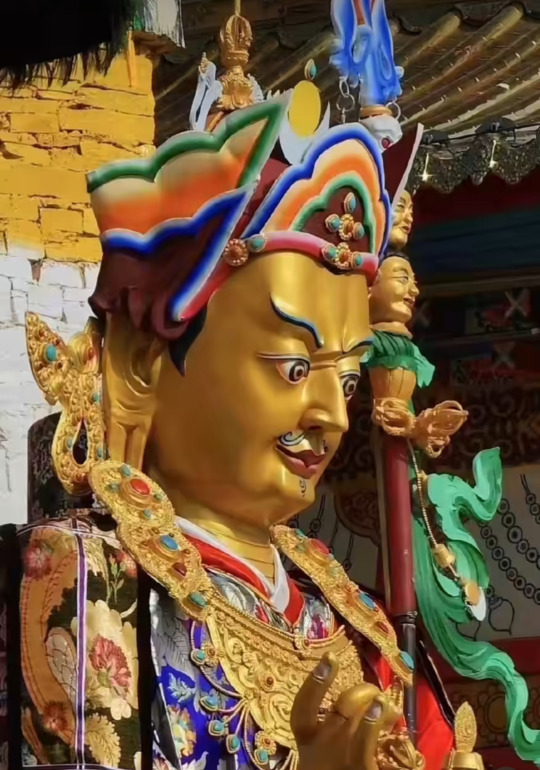
Free from the impulse to avoid, cultivate or cling. all concepts of samsara and nirvana totally vanish into the expanse of nondual wakefulness, and you remain nakedly as nondual unity, the essence of great bliss. At that time, even if the Dharmaraja, the Lord of Death, puts his hook into you and takes you away, you will not feel fear or dread.
-Padmasambhava
#Padmasambhava#Guru Rinpoche#four noble truths#buddha#buddhist#buddhism#dharma#sangha#mahayana#zen#milarepa#tibetan buddhism#thich nhat hanh#amitaba buddha#buddha samantabhadra#bodhidharma#rainbow body#Bodhisattva#manjushri#enlightenment spiritualawakening reincarnation tibetan siddhi yoga naga buddha#vajrasattva#vajrapani#vipassana
12 notes
·
View notes
Text
[P.S Sunyata is the sanskrit (buddhist sanskrit word) for the void state/I am state! ❤️]
1. Sunyata (Emptiness) is the profound meaning of the Mahayana Teaching.
Two thousand five hundred years ago, the Buddha was able to realise "emptiness" (s. sunyata). By doing so he freed himself from unsatisfactoriness (s. dukkha). From the standpoint of enlightenment, sunyata is the reality of all worldly existences (s. dharma). It is the realisation of Bodhi — Prajna. From the standpoint of liberation, sunyata is the skilful means that disentangle oneself from defilement and unsatisfactoriness. The realisation of sunyata leads one to no attachment and clinging. It is the skilful means towards enlightenment and also the fruit of enlightenment.
There are two ways for us to understand this concept of sunyata in the Mahayana context. One way is to try to understand the explanation about its true nature. The other way is the realisation through practice. What we are going to discuss now is about its true nature.
Mahayana teachings have always considered that the understanding of sunyata is an attainment which is extremely difficult and extraordinarily profound.
For example, in the Prajna Sutra it says "That which is profound, has sunyata and non-attachment as its significance. No form nor deeds, no rising nor falling, are its implications."
Again in the Dvadasanikaya Sastra (composed by Nagarjuna, translated to Chinese by Kumarajiva A.D. 408) it says: "The greatest wisdom is the so-called sunyata."
This sunyata, no creation, calmness and extinction (s. nirvana) is of a profound significance in the Mahayana teachings. Why do we see it as the most profound teaching? This is because there is no worldly knowledge, be it general studies, science or philosophy, that can lead to the attainment of the state of sunyata. The only path to its realisation is via the supreme wisdom of an impassionate and discriminating mind. It is beyond the common worldly understanding.
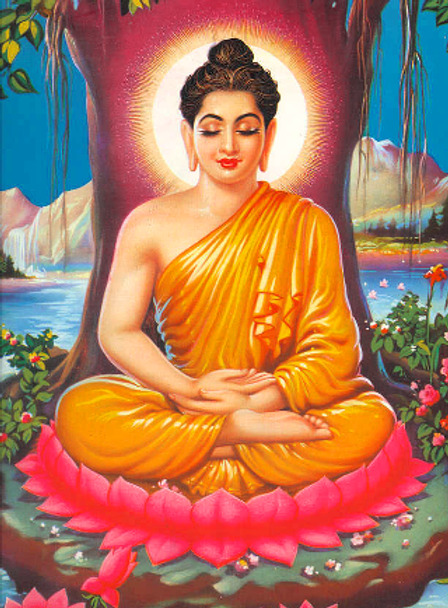
🧡🧡🧡
#void state#void success#buddhism#buddhist#buddhist monk#zen quotes#zen buddhist#mahayana buddhism#void motivation#buddha#enlightenment#buddhawisdom
16 notes
·
View notes
Photo
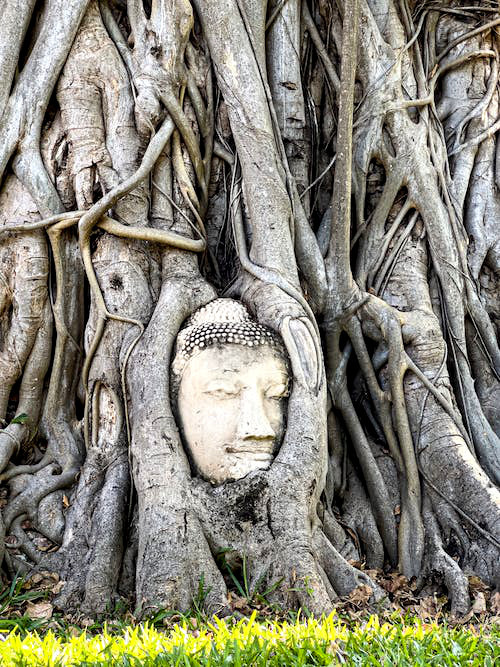
Legends and myths about trees
Trees in Buddhism (4)
Bodhi Tree (Ficus religiosa) – the "tree of awakening"
The Bodhi Tree ("tree of awakening"), also called the Mahabodhi Tree, Bo Tree, is a large sacred fig tree (Ficus religiosa) located in Bodh Gaya, Bihar, India. Siddhartha Gautama, the spiritual teacher of Buddhism, is said to have attained enlightenment under this tree around 500 BCE.
The original tree under which Siddhartha Gautama sat is no longer living, but the term "bodhi tree" is also applied to existing sacred fig trees.
It had been located in Bodh Gaya in present-day Bihar, India, but the tree was cut down due to the suppression of Buddhism in the India around the 5th CE. The decline of Buddhism in the Indian subcontinent coincides with the rise of Islam in that part of the world, especially the Islamic invasions that occurred in the late 12th CE.
However, as the lime tree grows strongly from cuttings, descendants growing from branches of the same tree were transplanted in various places. In recent years, a third generation Gautama Buddha Bodhi tree, grown from the original Bodhi tree in Anuradhapura, Sri Lanka, has been planted in the Mahabodhi temple in Bodh Gaya.
This tree, planted around 250 BCE, is a frequent destination for pilgrims, being the most important of the four main Buddhist pilgrimage sites.

木にまつわる伝説・神話
仏教の樹木 (4)
ゴータマ・ブッダの菩提樹 (聖なるイチジクの木) 〜「覚醒の木」
ゴータマ・ブッダの菩提樹は、仏教の開祖であるゴータマ・ブッダがその木の根元に座って悟りを得た菩提樹 (印度菩提樹)とその挿し木による子孫である。
菩提樹は、インドのビハール州ブッダガヤにある大きな聖なるイチジクの木で、「覚醒の木」とも呼ばれている。仏教の精神的な教師であるシッダールタ・ゴータマは、紀元前500年頃にこの木の下で悟りを開いたと言われている。
シッダールタ・ゴータマが座った元の木はもう生きていないが、「菩提樹」という言葉は、既存の神聖なイチジクの木にも適用される。
元の木は、現在のインドのビハール州のブッダガヤにあったが、5世紀頃のインドにおける仏教の弾圧により木は切られた。インド亜大陸における仏教の衰退は、同地域におけるイスラム教の台頭、特に12世紀後半に起こったイスラム侵攻と重なる。��かし、菩提樹は挿し木により強く育つので各地に同じ木の枝から育った子孫が移植された。近年になって、スリランカのアヌラーダプラにあった初代の菩提樹から育てられた、三代目のゴータマ・ブッダの菩提樹が、ブッダガヤの大菩提寺に植えられている。紀元前250年頃に植えられたこの木は、仏教の4大巡礼地の中でも最も重要な場所として、巡礼者が頻繁に訪れる場所である。
#trees#trees in buddhism#tree legend#tree myth#bodhi tree#sacred fig#buddha#enlightenment#decline of buddhism#history#philosophy#nature#art
153 notes
·
View notes
Text

You can always get what you want if you don't want it.
#good#morning#good morning#good morning message#good morning image#good morning images#good morning man#the good morning man#the entire morning#gif#desire#buddhism#buddha#enlightenment
57 notes
·
View notes
Text

Wild Woman riding a Unicorn, 1475
by a German artist known as Master of the Amsterdam Cabinet
* * * *
So What Is the Take-Away Point About the Unicorn?
Everyone wants to use happiness as a fix for problems, yet happiness is its own, very big thing, and it is selling happiness short to make it a fix for problems. To be happy is to experience life not as a series of struggles but as a gift, one that has no known limit. This doesn’t mean ignoring your difficulties: it means not assuming that they are what you think they are. If you throw away everything you believe about your difficulties you will notice that many of them disappear and the rest become interesting.
When you get the hang of being more interested in life than in agreeing with your thoughts, then you will get the life you get. And you will be able to have as much happiness as you want with almost no effort whatsoever. When you stop believing your thoughts, you look around just for you, just because it is interesting to look around. Some people call that enlightenment. But you won’t call it that. You’ll be too interested in the new view. And you’ll notice that wherever you look there will be nothing but those damned unicorns.
– John Tarrant
Note: This article was first published under the title, The Paradox of Happiness, in Shambhala Sun, January 2004.
#women#woman#Wild woman#Master of the Amsterdam Cabinet#happiness#unicorn#John tarrant#Shambhala Sun#buddhist#Buddha#enlightenment#interested in life
16 notes
·
View notes